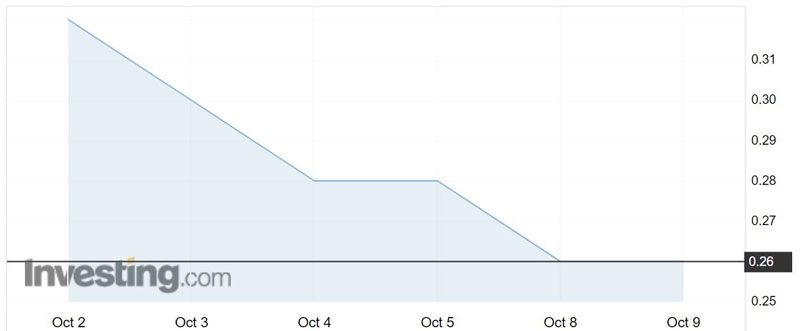Two well-known mining funds just backed ASX debutante Euro Manganese

Newly listed explorer Euro Manganese has welcomed a couple of well-known mining funds to its register.
Tribeca Investment Partners and Terra Capital Natural Resource Fund have taken substantial stakes in the Canadian manganese explorer.
Euro Manganese made its ASX debut last week at a 25 per cent premium to its IPO price of 26c.
The Vancouver-based manganese explorer is the first to dual-list in Australia and Canada at the exact same time.
>> Stockhead recently reviewed the ASX manganese scene here
Sydney-based Tribeca bought into both IPOs, sinking $2.4 million to pick up roughly 8.8 million shares. It has a 5 per cent stake.
Tribeca has invested in other juniors like DGR Global (ASX:DGR) — which develops explorers from grassroots stage to production, lithium producer Tawana Resources (ASX:TAW), uranium explorers Boss Resources (ASX:BOE) and Bannerman Resources (ASX:BMN) and zinc explorer Superior Lake Resources.

Terra Capital, meanwhile, owns 9 per cent of Euro Manganese after it picked up 15.4 million shares for about $3.6 million.
Terra Capital’s other investments include First Cobalt Corp (ASX:FCC), Jervois Mining (ASX:JRV) and Collerina Cobalt (ASX:CLL).
Both Tribeca and Terra Capital were reportedly seeking new investors to set up their own respective new resources funds that would give them between $300 and $400 million to inject into resources investments.
- Subscribe to our daily newsletter
- Bookmark this link for small cap news
- Join our small cap Facebook group
- Follow us on Facebook or Twitter
More skin in the game
Chairman Roman Shklanka and CEO Marco Romero, meanwhile, have sunk more than $C270,000 combined to pick up more shares on market.
Mr Shklanka paid $C70,000 to add a further 350,000 shares to his portfolio, while Mr Romero chipped in $C200,190 for an extra 926,000 shares.
Euro Manganese’s core business — and current ‘sole focus’ — is the development of its Chvaletice manganese project, in the small town of Chvaletice in the Czech Republic.
Manganese is the fourth-most-traded metal in the world. Only aluminium, iron ore and copper are more widely used.
About 90 per cent of manganese goes into steel-making, but it’s increasingly used in next-generation battery and power storage applications.
Mr Romero predicts there will be a “very significant increase” in demand largely due to the rapid growth in the electric vehicle market.
“Manganese has long been neglected as a battery raw material, which it is very clearly so and has been for a very long time in fact,” he told Stockhead last week.
“We have the opportunity to bring to market a strategic alternative or complement to existing production just at a time when there is explosive demand growth emerging, particularly from the automotive industry that is rapidly electrifying all over the world and particularly in Europe.”
UNLOCK INSIGHTS
Discover the untold stories of emerging ASX stocks.
Daily news and expert analysis, it's free to subscribe.
By proceeding, you confirm you understand that we handle personal information in accordance with our Privacy Policy.








